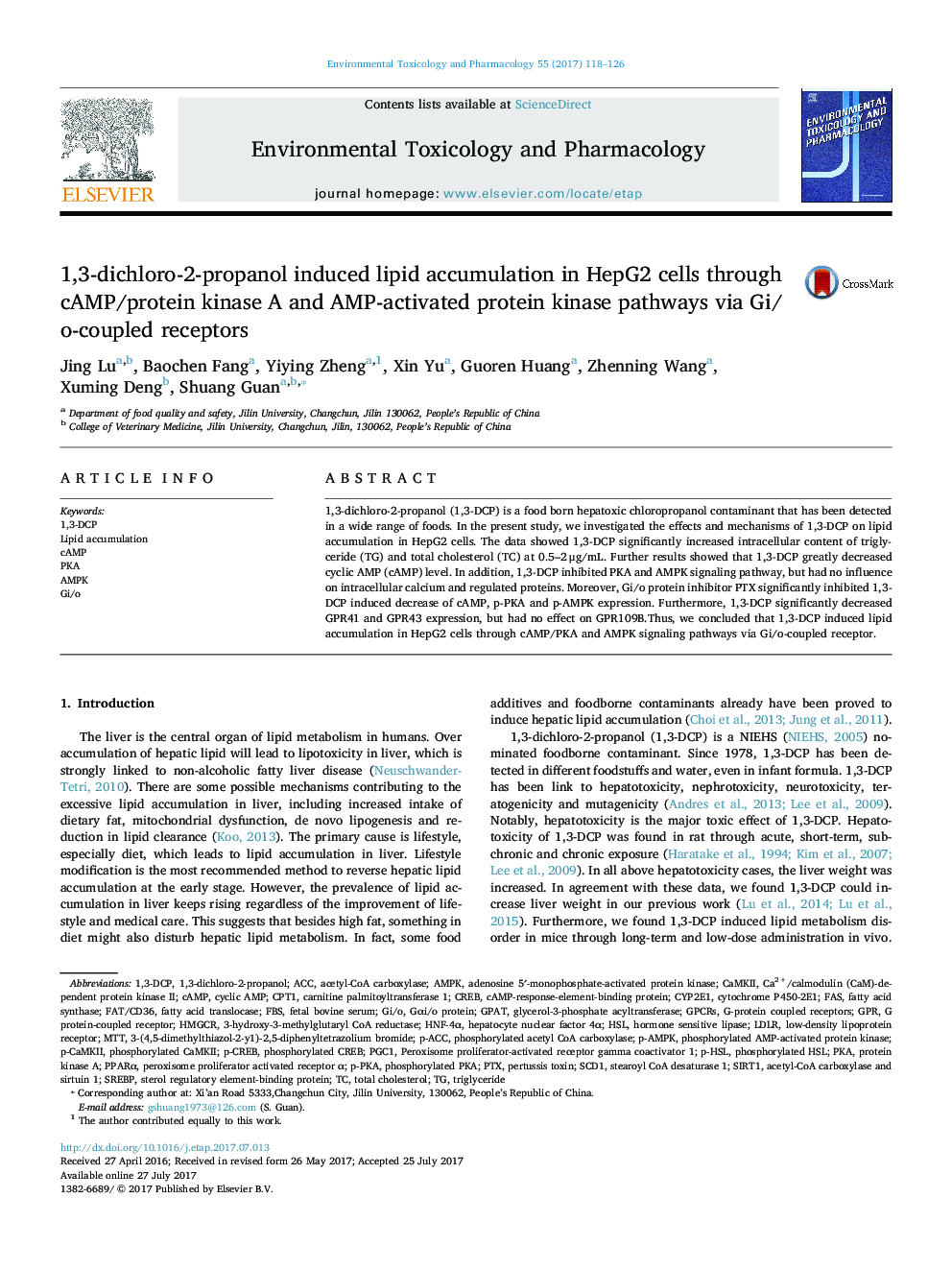| Article ID | Journal | Published Year | Pages | File Type |
|---|---|---|---|---|
| 5559780 | Environmental Toxicology and Pharmacology | 2017 | 9 Pages |
â¢1,3-DCP (0.5-2 μg/mL) dose dependently increased lipid accumulation in HepG2 cells.â¢The mechanism was through cAMP/PKA and AMPK signaling pathways via Gi/o.â¢1,3-DCP could not influence intracellular calcium and regulated proteins.
1,3-dichloro-2-propanol (1,3-DCP) is a food born hepatoxic chloropropanol contaminant that has been detected in a wide range of foods. In the present study, we investigated the effects and mechanisms of 1,3-DCP on lipid accumulation in HepG2 cells. The data showed 1,3-DCP significantly increased intracellular content of triglyceride (TG) and total cholesterol (TC) at 0.5-2 μg/mL. Further results showed that 1,3-DCP greatly decreased cyclic AMP (cAMP) level. In addition, 1,3-DCP inhibited PKA and AMPK signaling pathway, but had no influence on intracellular calcium and regulated proteins. Moreover, Gi/o protein inhibitor PTX significantly inhibited 1,3-DCP induced decrease of cAMP, p-PKA and p-AMPK expression. Furthermore, 1,3-DCP significantly decreased GPR41 and GPR43 expression, but had no effect on GPR109B.Thus, we concluded that 1,3-DCP induced lipid accumulation in HepG2 cells through cAMP/PKA and AMPK signaling pathways via Gi/o-coupled receptor.
Graphical abstractDownload high-res image (138KB)Download full-size image
